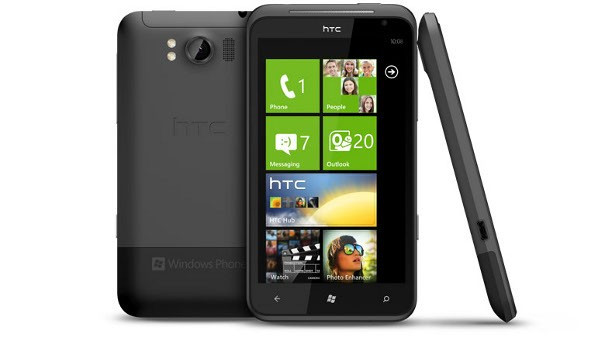Samsung Galaxy Nexus: HTC TITAN and Nokia Lumia 800 to Launch Joint Assault on 16 November

Two heavyweights in Microsoft's anti-Android Windows Phone arsenal, the HTC TITAN and Nokia Lumia 800, are set to fire the opening shots against Google's Ice Cream Sandwich fortress.
HTC TITAN
The Mango-powered TITAN was announced all the way back in September and according to the company's statement, will live up to its name, housing the largest LCD screen ever seen on an HTC smartphone, being around 4.7 inches large.
Contained within its 9.9mm thick aluminum case, the TITAN will also house an eight megapixel rear-facing camera capable of recording high-definition 720p video and a 1.3 megapixel front facing camera.
HTC's plus-sized Mango phone is also pretty fast, boasting 512 MB of RAM and an impressive 1.5 GHz processor.
The TITAN is currently available on a range of contracts starting at around the £30 mark. The device is also available sim-free for £460.
Nokia Lumia 800
Originally codenamed the Sea Ray, the Lumia 800 is the first high-end Windows Phone Mango device set to be released in Nokia's new series.
Since being unveiled, according to The Daily Telegraph, the flagship Windows Phone will be hitting UK stores 16 November -- at the time this article was written Nokia had not responded to requests for confirmation of the date listed.
As is the case with the TITAN the device will house some pretty impressive tech spec, boasting a 3.7-inch Super AMOLED number, with a resolution of 480x800 pixels. Additionally, the device will boast a 1.4GHz processor backed up with 512 MB of RAM and 16GB of internal storage.
As is the case with most recent high-end Nokia devices, the new Lumia 800 will also include a nice camera. The new Windows Phone is set to include an impressive eight-megapixel autofocus snapper, with its very own Carl Zeiss lens and LED flash. The camera will reportedly be able to record 720p HD video at 30fps.
The Samsung Galaxy Nexus
Putting aside Apple's popular iPhone series of devices, one of the main competitors to the new Windows Phones will be Samsung's Galaxy Nexus, which is set to launch just one day after Nokia's Lumia 800.
News of the frosty smartphone's release was broken by Amazon which listed the device as being available for £549 from 17 November.
Samsung originally unveiled the Galaxy Nexus smartphone mid-way through October during an event in Hong Kong. At the event Samsung confirmed the device will be the first smartphone powered by Google's new Android 4.0 Ice Cream Sandwich OS.
The device is set to house a 1.2 GHz dual-core processor and impressive 1280 x 720, 4.65 inch Super AMOLED screen, running at a native 720p resolution.
While not at the minuscule levels of Motorola's forthcoming RAZR, the new Nexus will be very thin, measuring in at 8.94 mm, boasting the same contour display and concave rounded screen design that was first introduced in the Galxay Nexus' predecessor the Nexus S.
The camera was also fairly impressive, with the new Nexus packing a five-megapixel HD snapper. During the event the camera was shown snapping photos with zero shutter lag and recording crisp 1080p HD videos.
The Curse of Windows Phone
Despite boasting a reasonable tech specs and prices, many analysts have already issued reports suggesting the TITAN and 800's fate was sealed the moment HTC and Nokia chose to use Microsoft's Windows Phone OS.
Most recently a report by research firm Strategy Analytics emerged suggesting that even if the OS doubled its market share, it would still only have a user base a quarter the size of Google's Android.
Despite pegging the Windows Phone OS as one of 2012's fastest growing platforms, Strategy Analytics clarified the market would still be dominated by Google's Android and Apple's iOS operating systems.
In their paper the researchers reported that they expect Google's Android to capture 44 per cent and Apple's iOS 23 per cent of the market in 2012. The research firm suggested following the release of the new range of Mango powered devices, the OS would only hold roughly 12.3 per cent of the smartphone market.
Keep watching the IBTimes for full reviews of the TITAN, Lumia 800 and Galaxy Nexus.
© Copyright IBTimes 2025. All rights reserved.





















